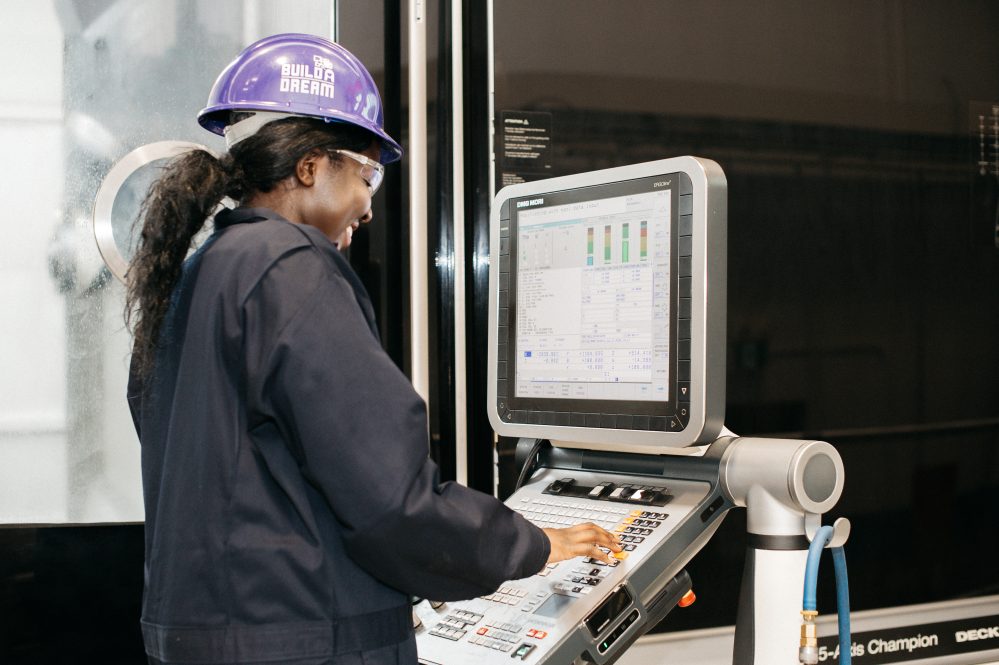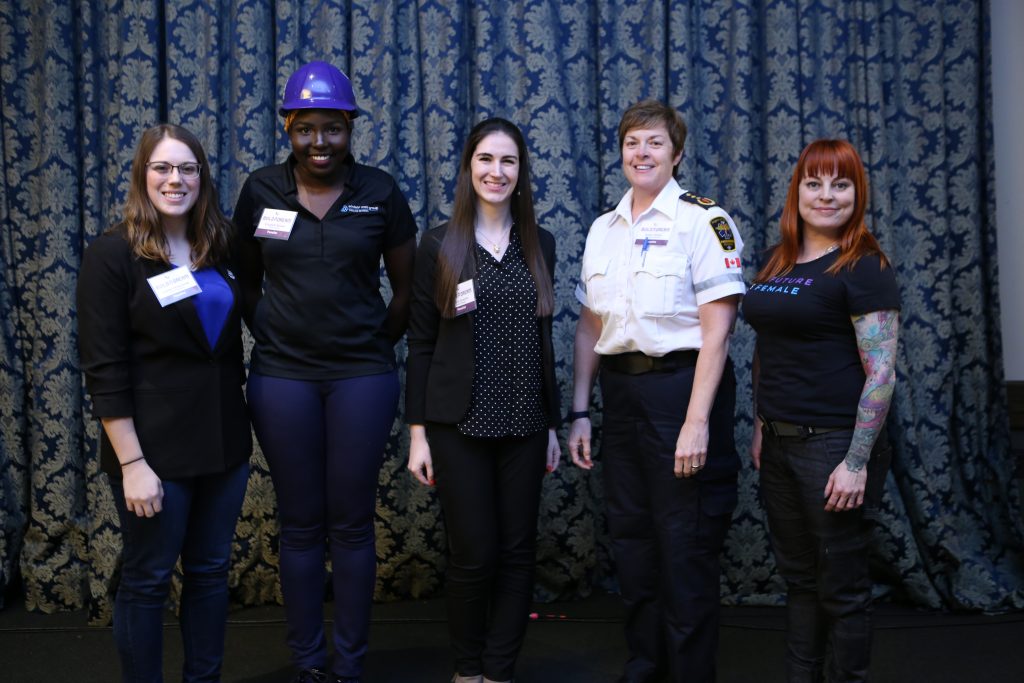
Builders and dreamers part 2: diversity and inclusion key to solving shop-floor worker shortage
January 9, 2020
By
Kristina Urquhart

Missed part one of our article on Build a Dream? Find out how the organization and its founder Nour Hachem-Fawaz are educating female students and their parents about opportunities in manufacturing, the trades and other traditionally male-dominated industries.
Here, we continue our conversation with Hachem-Fawaz about how Build a Dream is working to boost diversity and inclusion in the workplace.
In 2014, while working at Women’s Enterprise Skills Training of Windsor, Build a Dream founder Nour Hachem-Fawaz helped to secure a government grant for a program at St. Clair College that would train women as industrial mechanics and millwrights for work placements that could lead to permanent roles.
She started working at the college full time to manage the training program and, while soliciting companies to participate, found manufacturers were interested in the program because it would provide them fully trained apprentices at no cost. Several told her they would hire more women, as long as they had the correct skills and training for the job. In practice, Hachem-Fawaz found that wasn’t always the case.
‘Tough questions’
After coordinating training for 25 women, who spent 18 weeks on the shop floor with college instructors to prepare for a 12-week paid placement, Hachem-Fawaz approached the same employers. “And then some of the excuses started coming up,” she says. Some said they didn’t have female washroom facilities, expressing trepidation about how a female on the shop floor might affect existing policies and procedures.
“They started asking some really tough questions, but they were questions that I think are very important for us to address because they’re not the only ones thinking about it,” she says. “‘What if she goes on maternity leave?’ Or, you know, ‘Childcare doesn’t start till 8:30; my shift starts at seven.’ How do I overcome these barriers in getting more women into industry?”
Policy overhaul can be daunting
The challenge, Hachem-Fawaz found, was that small- and medium-sized companies often don’t have a human resources department to handle such policy changes. “For them to say, ‘Okay, I’m going to drop everything I’m doing and now focus on diversity and inclusion while trying to meet my bottom line’ is going to be very difficult,” she says.
As a result, she became a de facto diversity officer, working with the companies participating in the placement program to appropriately onboard their new female employees and to develop diversity and inclusion plans for future hires.
Now, with Build a Dream, Hachem-Fawaz is continuing the diversity work. In October 2019, backed by funding from Workforce WindsorEssex, the organization launched the Workforce Innovators Network, a new platform offering speakers, workshops and business consultations to assist companies in creating inclusive practices for talent management.

Nour Hachem-Fawaz, founder of Build a Dream and the Workforce Innovators Network, says that when girls see themselves reflected in the workforce, they’re more inclined to apply for positions. Pictured here: Build a Dream speakers at a recent event in Kitchener, Ontario. Photo: Delmore Photography/Build a Dream
Government help needed
“We really wanted to – through a grassroots initiative – address the underlying barriers facing women in work, and how we define women in the workplace,” says Hachem-Fawaz of Build a Dream’s expansion. “If you’re saying you want to tap into the other 50 per cent [of the talent pipeline], your approach must change of how you traditionally do recruitment or advancement in your own industry.”
Some of that legwork should be the responsibility of government agencies, she says, through the funding of awareness campaigns on both of the issues that drive Build a Dream: attracting more women to industry, and helping companies to diversify their workforce.
“We’re beginning to see a shift,” she says. “[D&I] needs to be embedded into companies’ organizational culture, from recruitment, to HR, to retention.
“Advancing women in the industry is going to really be key to growing.”
Five tips to make your shop floor more inclusive
During a diversity consultation, “we will never, ever tell a company, ‘Change your qualifications. Or, change the way you assess,’” says Nour Hachem-Fawaz, founder and president of Build a Dream and the Workforce Innovators Network. “What we say is, ‘Change the lens that you look through for assessing.’ Or we encourage a different approach in trying to recruit certain candidates.”
True transformation usually requires the help of a dedicated diversity or HR officer, but here Hachem-Fawaz shares some quick tips on how to increase inclusivity on the shop floor.
1. Consider the language of your company policies. One client asked Hachem-Fawaz if they should implement a policy for women who needed to start their shift late because of daycare drop-off hours. “You need to have a family policy,” she says. “Childcare is not a women’s issue – it’s a family barrier, because both men and women will put their child in daycare.”
2. Review your public-facing assets. Hachem-Fawaz says she often hears from women that have trouble picturing themselves in STEM or trades roles. Start by auditing the images on your website. “If they’re all [pictures of] men, and then I look at the management team and it’s all men, and I look at your board of directors and it’s all men, then I’m automatically not going to see myself reflected in your industry,” she explains. “So [as a female candidate] I’m likely not going to apply.”
3. Evaluate your recruitment methods. If you’ve used the same network for years to recruit for jobs, it’s time to get out of your comfort zone, Hachem-Fawaz says. “If you’re asking the shop floor, which is predominantly men, to recommend people, you’re likely not going to get a female recommendation.” Try a recruitment agency, or post on industry groups on LinkedIn – and review that job posting for inclusive language.
4. Build industry partnerships. Take stock of all of your partners – and if you don’t have any, start thinking about recruitment agencies, colleges with vocational training, universities with engineering programs, or government-funded programs for women in career apprenticeship.
5. Forgive yourself, and learn along the way. Hachem-Fawaz says that in most cases, companies are not exclusive to women on purpose. “It’s an unconscious gender bias. You don’t know what you don’t know,” she says. When Build a Dream works with corporate clients on creating diversity policies, management is usually keen to understand how they can improve workplace culture and in turn operational performance by diversifying their workforce. “They’re very sincere in wanting that support, so that they can begin to transform therein.”


